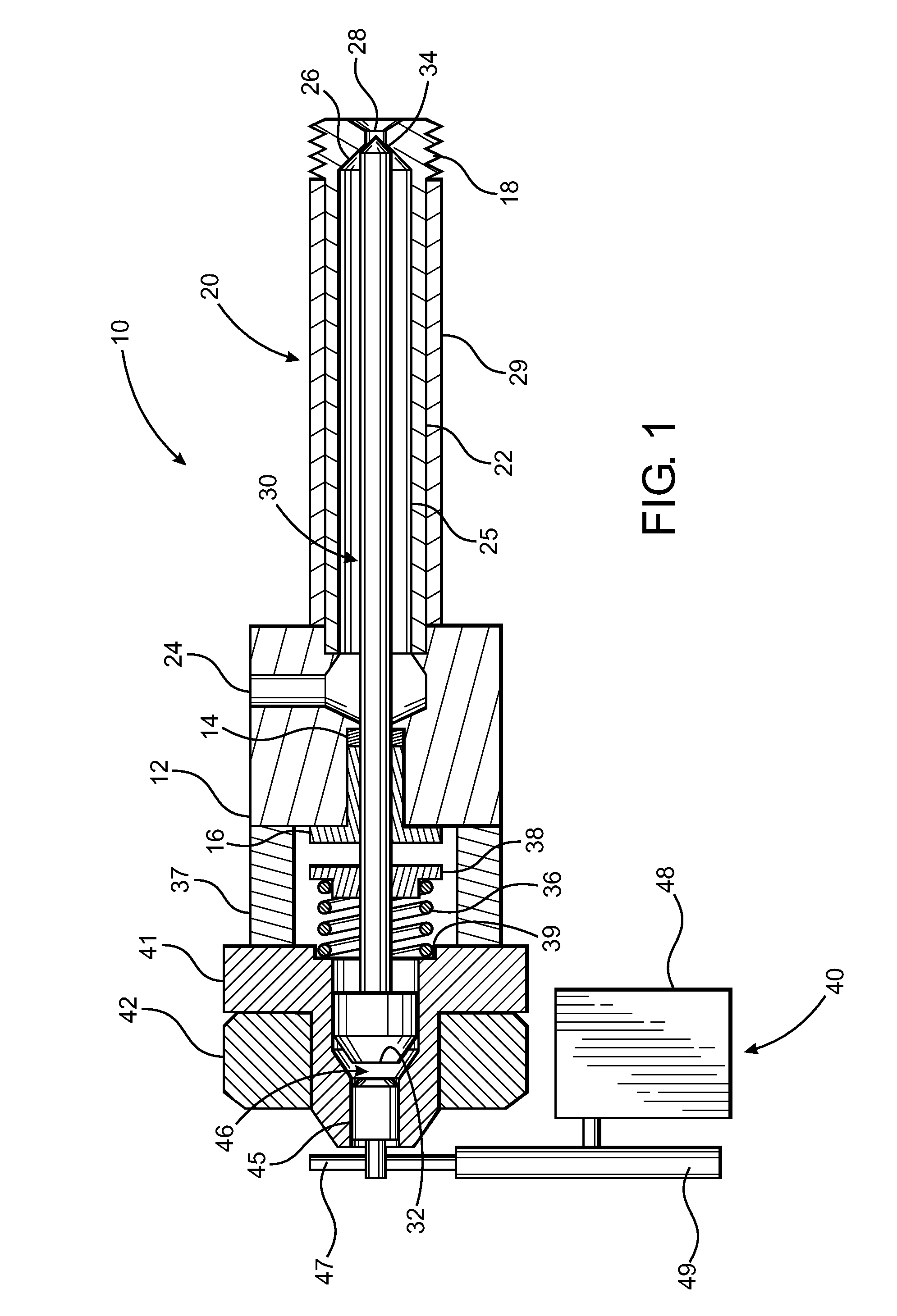However, to date, few of these devices have found widespread acceptance and utilization, mainly due to the complexity of handling and, more importantly, controlling the quality and / or the quantity or rate of flow of the steam.
In particular, a common pitfall of many of these devices is that the components utilized for
steam generation and delivery are often related to certain operating characteristics of the engine, such as
combustion, as well as intake
manifold vacuum pressure, engine speed, and / or quality and quantity of high temperature
radiation from operation of the engine available for
steam generation.
It is primarily this factor which is believed to be the reason why these devices have not achieved widespread acceptance and utilization.
Additionally, external factors, such as
adverse weather conditions, may have a particularly severe and negative
impact upon the viability of adding steam to a conventional air-fuel mixture.
Under these conditions, any residual
water vapor remaining in a device, or its appurtenances, intended for outdoor use, such as an automobile engine, is at risk of freezing when the engine is not operating, which could easily result in temporary blockage of flow through the
steam injection device.
In more severe cases, freezing
water vapor could result in the rupturing of lines, freezing of
throttle plates, fittings, and / or other components of the
steam injection device as the freezing
water vapor expands on the inside of these components.
Thus, in
spite of the numerous advantages which may be obtained from the addition of steam to a conventional air-fuel mixture, the widespread acceptance and utilization of devices structured to achieve this goal has not become a reality.
Historically, however, attempts to
scale down and regulate these large scale, continuous, live steam systems in relatively small scale, intermittently operated systems, for example, a four cycle engine, have been plagued with significant efficiency losses.
It is believed that among the efficiency problems associated with the small scale systems is the
energy loss of the live steam as it is acted upon by the dynamics of the small scale
system.
While it is understood that dynamic losses are present in large scale systems as well, the overall
impact of the
energy loss of the live steam is not as significant in terms of
system efficiency, due in part to the large volume of steam utilized in such systems, as it is in relatively small scale systems.
A further difficulty encountered with attempts to
scale down continuous, live steam systems is the accurate control of the quantity or rate of flow of live steam to a particular component of the
system.
This is a problem common to handling any
compressible material, as there is a delicate balance and constant
trade off between pressure, volume, and temperature.
As such, and as noted above, given that steam energy losses are directly related to the
system configuration, materials of construction, insulation factors, etc., these losses are exaggerated in small scale systems, particularly due to increased frictional and thermal losses through smaller scale pipes and fittings.
In general, higher temperatures reduce the operating efficiency of an
electric motor due to an increase in the resistance of the conductive windings of such motors at elevated temperatures.
In order to control the
operating temperature of electric motors, and in particular, the
operating temperature of the conductive windings, auxiliary
temperature control systems are often implemented, which are independent of the operation of the motor, such as a fan, a forced flow radiator, or even a temperature controlled environment in which a motor operates, all of which require additional
external energy resources and expenses related to the operation of an electric motors, thereby resulting in a decrease in the overall operating efficiency of the same.
Alternatively, or in combination with such auxiliary
temperature control systems,
high resistance conductive windings have been employed in electric motors in order to prevent runaway operating temperatures, however, the trade-off in
temperature control comes in the form of a reduction in the inductive magnetic forces generated at the poles of the
electric motor, thereby resulting in a reduction in the operating efficiency of the motor, which is often significant.
 Login to View More
Login to View More  Login to View More
Login to View More 


